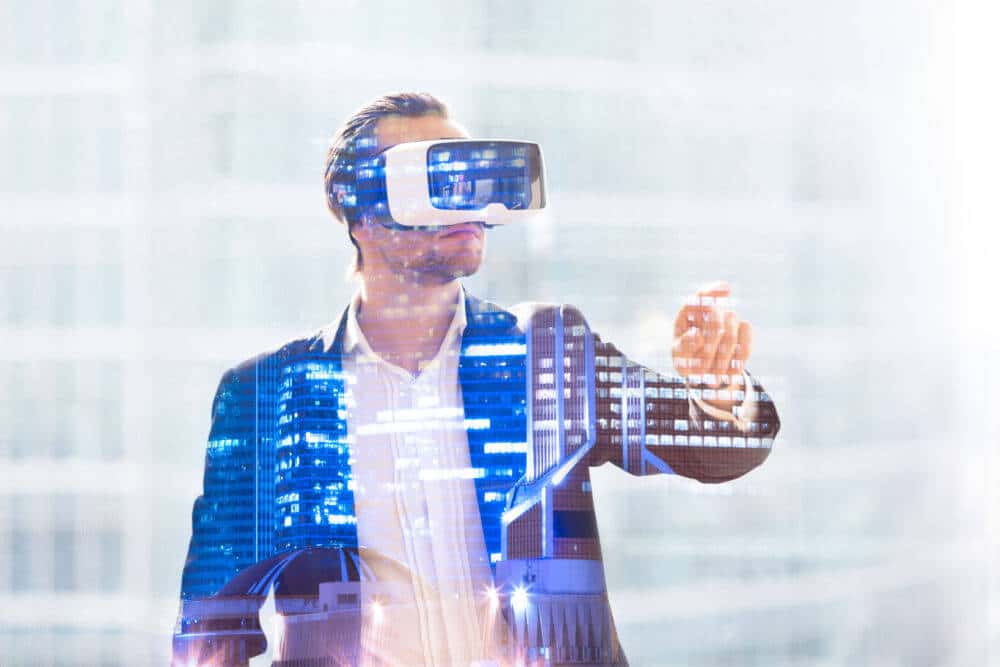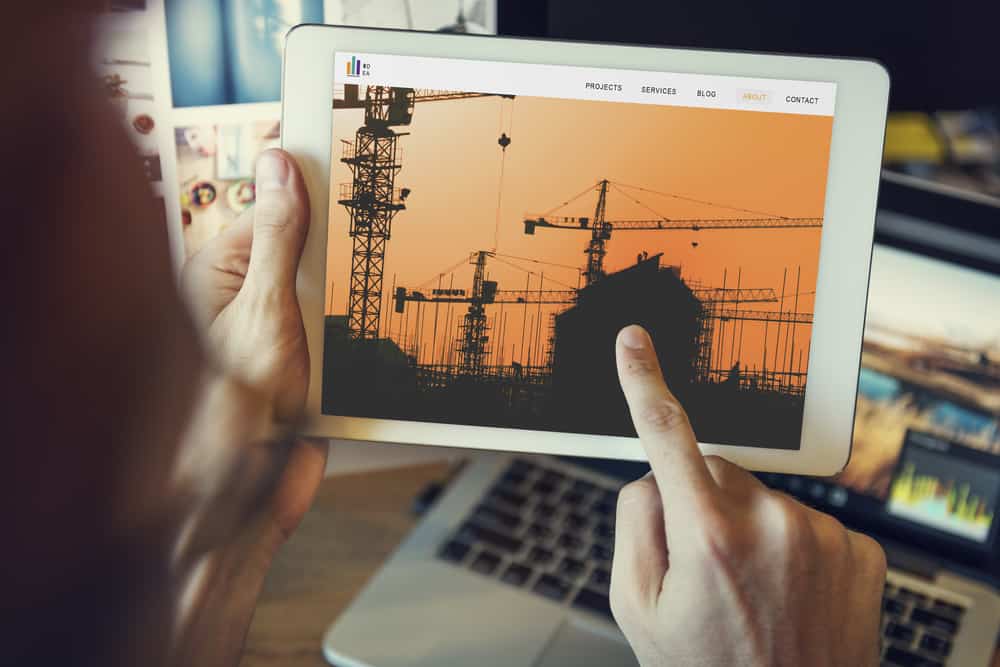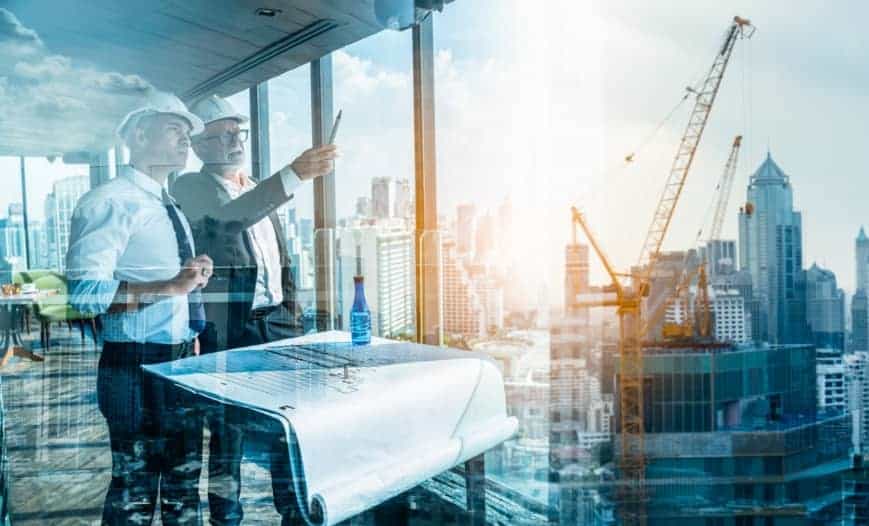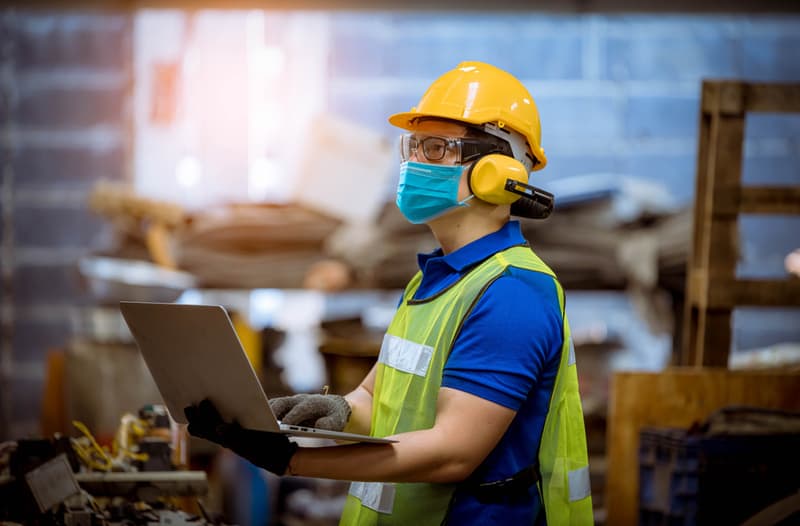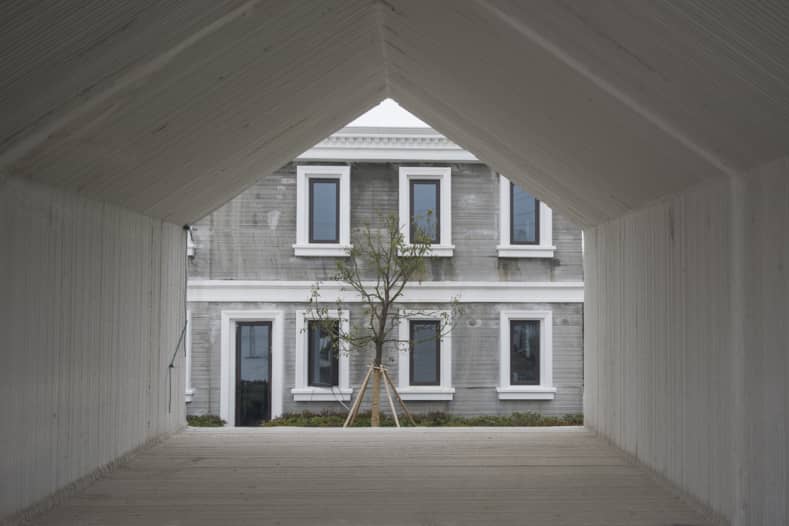- The low-emission homes of the future
- Sweden’s AI-powered, carbon capturing skyscraper
- A fully-connected smart home
- Artificial gravity homes on the moon and Mars?
- A gravity-defying virtual city in the metaverse
The global housing industry faces various challenges. As the climate changes, not only do average temperatures increase – which could have devastating effects in hotter parts of the world – but extreme weather conditions such as storms, flooding, and hurricanes also become more common. In addition to these issues, the global population is aging and demand for housing is exceeding supply. Solving these issues is not purely down to the housing industry itself – sweeping social changes will likely be necessary to fully tackle these problems – but contractors, designers, and urban planners have important parts to play as well. The homes of the future must be sustainable, resilient, practical, and affordable. Technology will play a huge role in enabling this. From solar energy and smart appliances to carbon-capture technology and artificial gravity, innovations are being made constantly. However, it will also require widespread adoption of these technologies – in a practical, affordable way – to overcome the challenges we will face in the years ahead.
The low-emission homes of the future
More and more countries are pledging to reduce their emissions to Net Zero by 2050, to limit the global rise in temperature to 1.5°C. The Net Zero Tracker database reveals that 82 per cent of the population is now represented by Net Zero targets, and 91 per cent of global GDP is captured by these targets. However, despite these promising statistics, existing initiatives will not be sufficient to achieve these ambitious targets.
“The growth of net zero targets has provided a governance framework of unprecedented scale and scope – carving out an achievable path to global decarbonisation. But our analysis clearly shows major flaws in current net zero target-setting practice across all entities.”
Frederic Hans, climate policy analyst, NewClimate Institute
Action on climate change must start now rather than being left until just before 2050. The UK’s Future Homes Standard comes into effect in 2025, and requires any new homes to be built to produce 75 to 80 per cent fewer emissions than existing building standards. Gas boilers and other forms of fossil fuel-based heating are set to be banned in new homes. These homes must be “zero carbon ready”, meaning that they require no work to be compatible with the heat pumps and electric heating networks that are set to transform and “decarbonise” the country’s energy grid.
Sweden’s AI-powered, carbon capturing skyscraper
In 2021, construction was completed on a 75-metre-high, 20-storey wooden skyscraper in the Swedish town of Skelleftea. The Sara Cultural Centre includes a library, six theatre stages, a conference centre, two art galleries, and 205 hotel rooms. The particularly unique aspect of the building is its material – the skyscraper is constructed from timber. This was decided as part of efforts by the town to reduce the use of environmentally-destructive construction materials such as cement – the production of which is the world’s largest industrial emitter of carbon dioxide. Wood also stores carbon dioxide, capturing emissions from nearby. The designers of the Sara Cultural Centre claim that it will capture 9 million kilogrammes of carbon dioxide over its lifetime.
What’s more, the skyscraper also uses advanced technologies to improve sustainability and efficiency. Solar panels generate power, and excess energy is stored in the building’s basement. According to Patrik Sundberg of local energy firm Skelleftea Kraft, an AI system “analyses the building’s energy usage and can make decisions on how we should run it based on available energy levels.” This system will ‘learn’ the energy needs of the building over time and make crucial decisions instantly. It can even distribute any surplus energy to surrounding buildings when needed. With Skelleftea’s population predicted to expand rapidly over the coming years, practical solutions and sustainable traditions like these are vital.
“In all of this change we are going through, with all of the new people moving here, we feel safe that we have this new environmentally-friendly material.”
Evelina Fahlesson, deputy mayor of Skelleftea
In the future, we will very likely witness more innovative, carbon dioxide-capturing skyscrapers being built. Indian architect and designer Manas Bhatia, for instance, has used AI image generation to envision a “sustainable utopian city of the future”. This city would feature biophilic air purification towers coated with algae – another natural absorber of carbon dioxide. These towers could remove the need for artificial cooling systems, and provide a blueprint for sustainable urban design.
A fully-connected smart home
The Internet of Things (IoT) is changing the way that we interact with household appliances – from TVs and lighting to heaters and doorbells. This trend could even affect the way houses themselves are designed and built. South Korean electronics giant Samsung has developed two “Future Gen Houses”, one in South Korea and one in the UK. These houses were designed to showcase the company’s SmartThings system, a “comprehensive device-connected experience that fits a user’s own lifestyle”. The SmartThings system includes various Samsung products as well as other smart devices such as washing machines, refrigerators, and air conditioners. These devices and appliances are all connected to each other using WiFi to create a network. The Future Gen Houses were designed with these systems in mind, with each space optimised for “one of five different Gen Z interest categories, including gaming, entertainment, sports and fitness, cooking and design.” Their occupants can use their smartphones to control appliances, TVs, lighting, and so on. The company plans to open more Future Gen Houses all over the world. It certainly seems likely that more organisations and housing developers will start to design homes with these kinds of smart systems in mind.
Artificial gravity homes on the moon and Mars?
For some people, living in space has been an attractive concept for decades, but so far this has been limited to astronauts living in space stations like the ISS. However, a new proposal from Kyoto University and Tokyo-based construction firm Kajima Corporation may be the most promising yet. The plan involves the construction of “the Glass”, an approximately 400-metre-tall rotating building that creates artificial gravity with the centrifugal force of its rotations – one every 20 seconds. In theory, this design could enable humans to live on the moon and Mars (one version is planned for each) without experiencing inconvenience and health problems, such as bone loss and kidney stones, that can result from spending long periods of time in low gravity. Unfortunately, it is expected to take almost a century to complete the project – although a simplified version may be built by 2050. The designers of The Glass intend for the structure to include waterfronts and forests, and even a “space train” that can take commuters on journeys between Earth, Mars, and the moon.
A gravity-defying virtual city in the metaverse
Space isn’t the only place that lacks gravity. The virtual worlds of the metaverse are also not bound by the laws of physics of the ‘real’ world, which provides many opportunities for building homes in them. The metaverse also isn’t subject to planning regulations – yet. UK firm Zaha Hadid Architects is designing a virtual ‘self-governed’ city for the metaverse named Liberland Metaverse, after the real-world ‘micronation’ Free Republic of Liberland that sits between Serbia and Croatia. Liberland Metaverse is designed to function as an independent virtual reality state, as its namesake does in the ‘real’ world. Planned and developed by architect Patrik Schumacher, in collaboration with Jaime Lopez and Kenneth Landau of cloud-based platform Mytaverse, Liberand Metaverse is intended to become a hub of networking and creativity for metaverse developers, and a place where users can buy land and property with cryptocurrency. Metaverse users will even be able to set up their own businesses. Schumacher designed Liberland Metaverse using an architectural principle called parametricism, which uses software and algorithms to generate forms that suit specific purposes. In the city, people will be able to visit buildings such as houses, a city hall, and an exhibition centre, all designed by Zaha Hadid Architects. The virtual nature of the location allows buildings to feature elements that would break real-world laws of physics, such as floating walkways and staircases. Schumacher and his team believe that Liberland Metaverse could even be used as a template for a real-world construction of the city.
“This realism in our cyber-urban conception also allows for the later physical realisation of the designed metaverse spaces in the physical Liberland, to any desired extent.”
Patrik Schumacher, principal architect, Zaha Hadid Architects
Closing thoughts
Whether physical or virtual, earth-bound or interplanetary, the homes of the future are likely to look very different from the homes that we are used to currently. In the words of Charu Gandhi of UK-based design and architecture firm Elicyon, “materials in the home in the future will look completely different. They will self-repair and self-sanitise. We may have materials that look integrated but are modular, so you can paint something on it, but the top layer disintegrates and pulls apart. We will also have inbuilt fingerprint technology.” The rapidly-growing connectivity enabled by smart devices and the IoT will increase the convenience of home life, as well as the way houses are designed. Hopefully, the homes of the future will provide solutions to the challenges of climate change and housing accessibility on a global scale.


